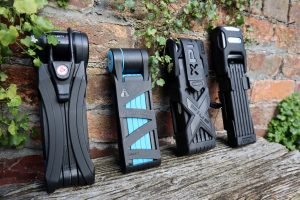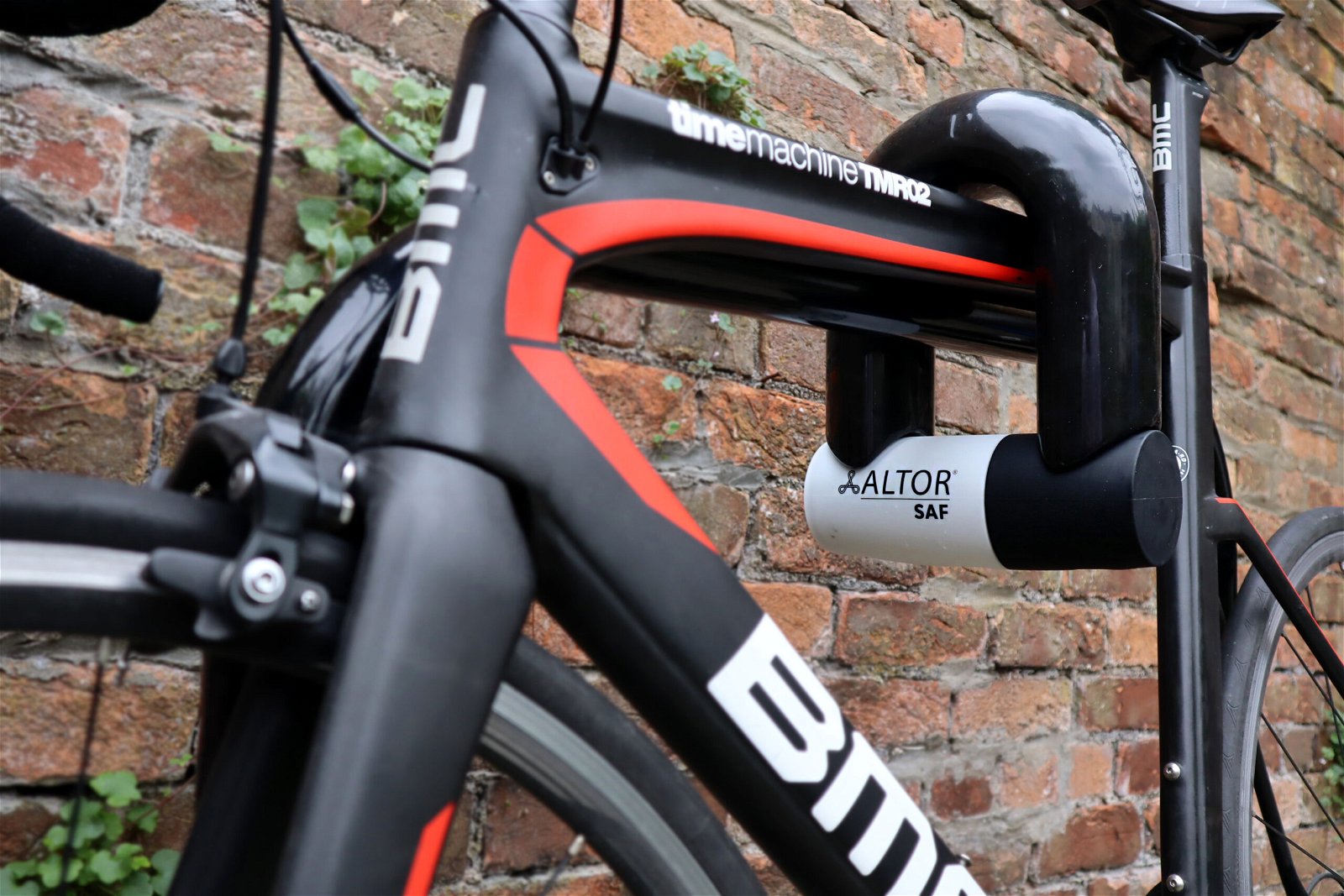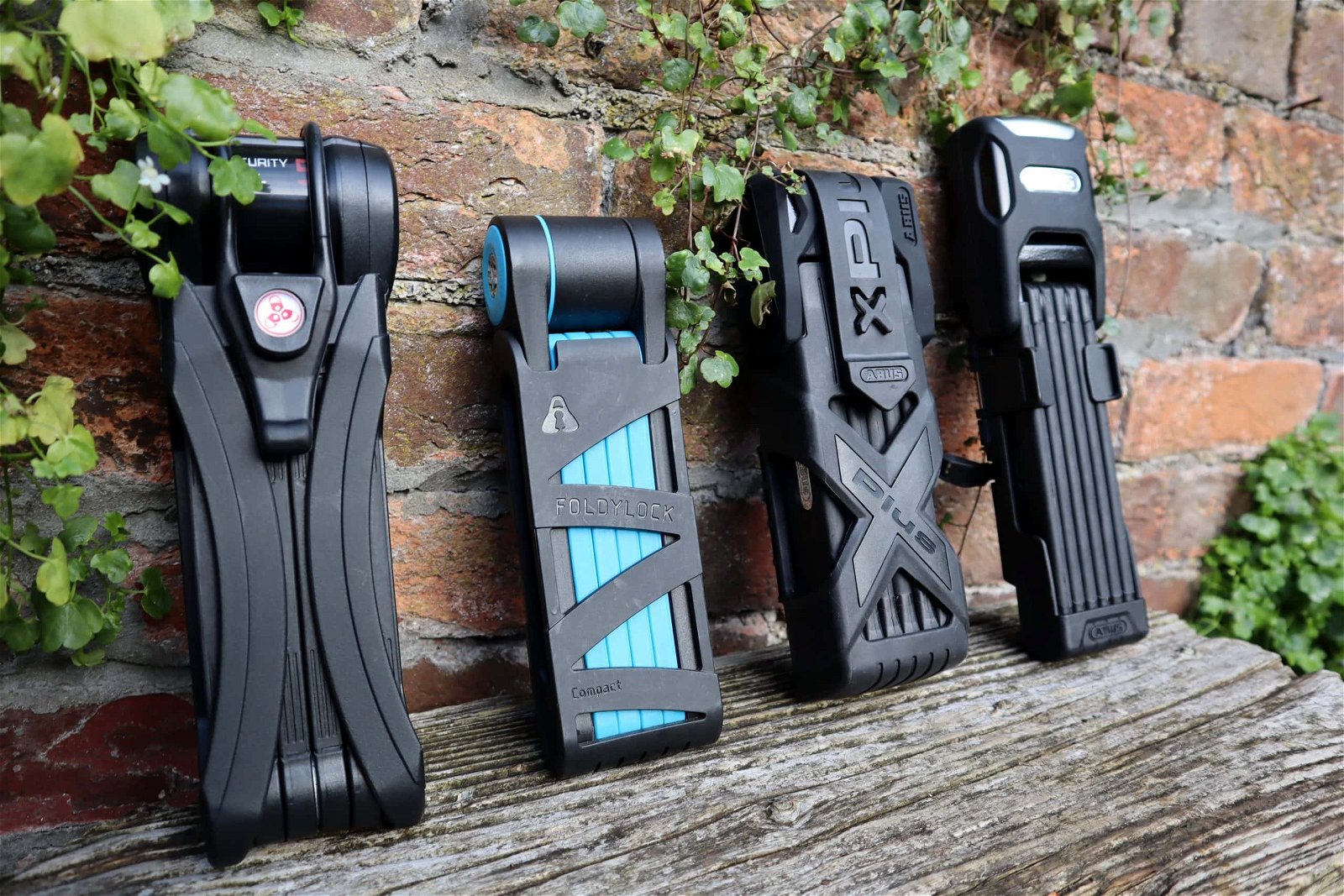
As you can imagine, wheels are an essential component of a bike.
Not only do bike wheels allow us to roll smoothly while cycling, but they also provide dampening from lumps and bumps as well as providing traction to the surface we’re riding.
Many cyclists don’t understand how to measure a bicycle wheel, or how to measure a bike tire so I put together this bicycle wheel size guide to help you determine your current wheel size and what size bike tires you need for your wheels.
Riding with wheels that are too big or small can cause damage to your bike, so pay attention to the steps below, and you won’t have any issues!
Ready to learn how to measure a bike wheel? Let’s hit the road.
How to Measure a Bike Tire (How to Measure a Bicycle Tire)
Based on how much time you want to allocate to measuring your bike wheel, you can take a few different approaches.
You could attempt first to contact the manufacturer or the shop where you purchased your bike. Retailers and manufacturers have a record of all measurements and sizing information.
But be warned, retailers can be a nightmare to get hold of and often take a long time to reply.
If you have a bike tire on your wheel, you can generally find required measurement information on the tire wall (side of tire – see picture below).
Tire walls usually display the size as determined by the European Tire and Rim Technical Organization, or ETRTO and will look something like the picture below.

If you can’t find the sizing on the wall of your tire, don’t panic. Below you’ll find several methods to help you understand how to measure your bike wheel.
Alongside understanding more about your bicycle’s rim, a few of the methods below will also help you determine which tire size your wheel needs.
These steps are beneficial in those cases where you do not have a bike tire or have custom wheels, as the measurements you seek may not be readily available to you.
Typically there are two main approaches for how to measure bicycle wheel size.
Just before we begin, if your wheel doesn’t have a tire fitted, click here to move on to the next step.
The Standard Method (Easiest and Fastest Ways to Find Bike Tire Size)
The quickest way to determine your bike wheel size is the standard method.
The standard method measures the tire width and tire diameter in inches.
How to Measure Bike Wheel Size with the Standard Method
Let’s start with a step by step guide on completing the standard method of bike wheel measuring:


- Begin by propping your bicycle on its kickstand or against a wall so that it’s stable.
- Using a tape measure, place the bottom of the tape at the lowest point of the tire (on the ground) and measure in a straight line to the centre of the bike wheel to find your wheel radius (as shown in the image above).
- Multiply your wheel’s radius by two to find the wheel’s diameter.
- Now, measure the tire’s width by placing the measuring tape across the top of it.
- The numbers obtained are your standard measurements. Be sure to list diameter first, followed by the tire width.
- Bike wheel diameters are rounded to the nearest half-inch, so if your measurements are just over or under, round up or down to the nearest size.
The ISO Method (Most Accurate Way to Measure Bike Tire Size)
The most accurate way to measure bike tire size is through the ISO method.
ISO stands for the International Organization for Standardization, a measuring system that uses millimetres to gain the most accurate sizing possible for a bike tire.
Using this method, one measures the width of the tire and the inner diameter, or bead seat diameter.
Towards the end of the article, you’ll find a chart allowing you to compare the different ISO wheel sizes and what types of bike or vehicle each size of wheel is used with. Click here to view the chart.
How To Measure Bike Tire with the ISO Method
Here is a step by step guide on how to measure a bike tire using the ISO standardization method.
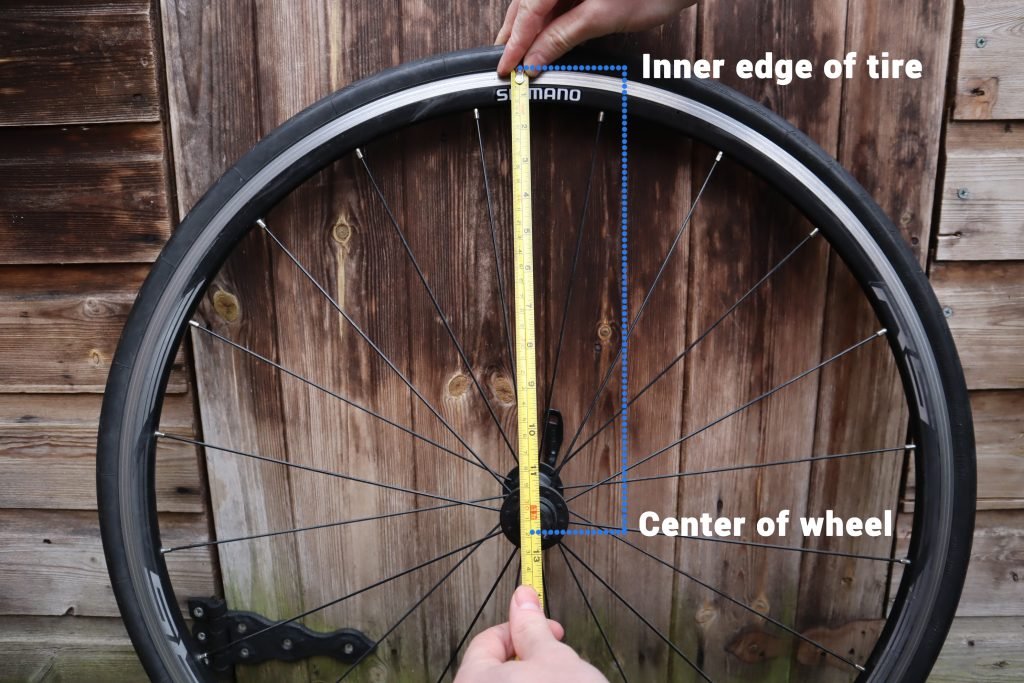

- Not all wheel brands and manufacturers use the ISO standardization, so if you have a tire on your wheel, check it to see if there is a printed ISO measurement.
- If there is no visible ISO measurement on your tire, check the wheel rim.
- If you can’t find a measurement, lean your bicycle against the wall or with its kickstand so that it’s stable.
- With a measuring tape, begin at the centre of the wheel and measure up to the tire’s inner edge (or as close to the bead seat as possible).
- If you don’t have a tape measure with millimetre readings, measure in inches and multiply it by 25.4 (for example, 12.25(inches) x 25.4 = 311mm).
- Identify this length and multiply it by two for the diameter of your wheel (311 x 2 = 622mm).
- Measure the tire’s width by measuring from one side of the tire to the other.
- You now have all of the calculations needed for the ISO method. This measurement is listed with the tire’s width first, then the diameter (25-622).
How To Measure a Bike Wheel (Rim) for Tire Size
If you do not have your bike’s tire to hand, you can determine the tire size by measuring your bike’s rim width in millimetres as well.
Based on the average tire and wheel combinations currently on the market, the following charts illustrate the coinciding tire size and rim length.
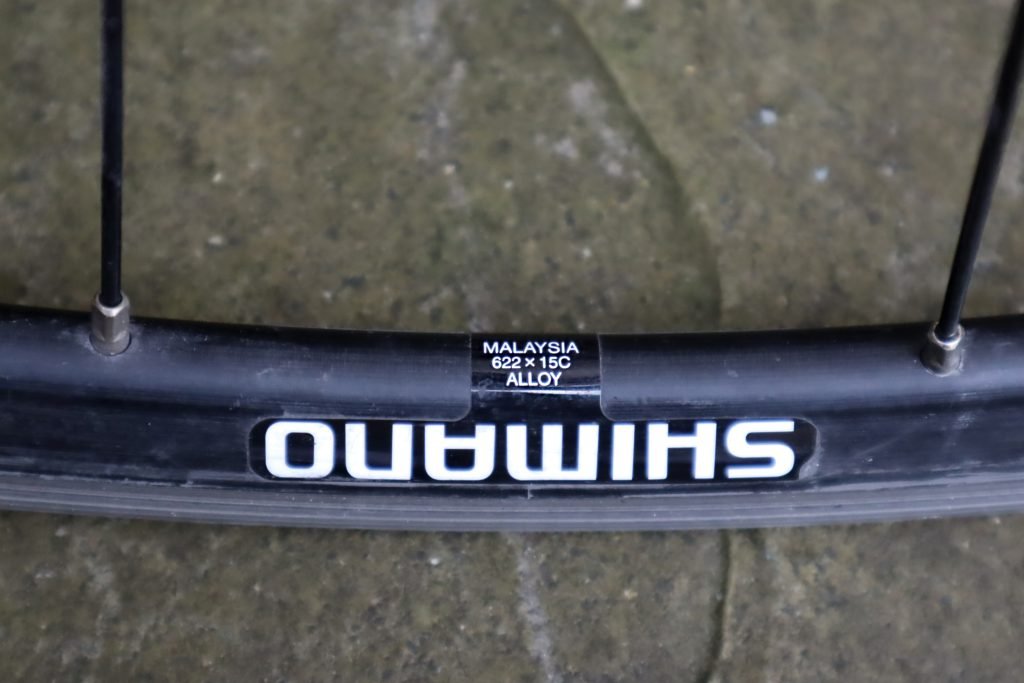

Many rims will display their size somewhere, but some rims may be missing this measurement.
If you cant find. measurement on your wheel’s rim, follow the easy steps below that will help you determine the appropriate tire sizes your rim can handle.
- With no tire on your bike wheel, position the wheel vertically and hold it steady.
- Take a measuring tape and press it against the inside of the rim, where the tire bead would normally sit.
- Measure the internal distance from one side of the rim to the other (as shown in the image above).
- Take this width and apply it to the correct table below.
It’s important to note that these charts are based on average measurements; therefore, if possible it’s a good idea to double-check with your wheel’s manufacturer or retailer to confirm all compatible tire sizes.
It’s also important to consider the tire clearance on your fork and rear triangle. If you choose a tire that’s too wide you can end up damaging your frame and a tire that’s too thin can easily cause damage to your rim and inner tube.
Road Bike Rim Width to Tire Size Chart
| Tire Size Compatibility | Internal Rim Width |
|---|---|
| 23 - 25c | 13-15, 17-19mm |
| 25 - 28c | 13-15, 17-19, 20-21, 22-23mm |
| 30 - 33c | 17-19, 20-21, 22-23, 24-25mm |
| 33 - 35c | 17-19, 20-21, 22-23, 24-25mm |
| 38 - 40c | 20-21, 22-23, 24-25mm |
| 40 - 43c | 20-21, 22-23, 24-25mm |
| 43 - 45c | 22-23, 24-25mm |
| 45 - 48c | 22-23, 24-25mm |
| 48 - 50c | 24-25mm |
Mountain Bike Rim Width to Tire Size Chart
| Tire Size Compatibility | Internal Rim Width |
|---|---|
| 1.9" Tires | 19-23mm |
| 2.0" Tires | 19-24mm |
| 2.1" Tires | 19-28mm |
| 2.2" Tires | 20-30mm |
| 2.3" Tires | 21-33mm |
| 2.4" Tires | 23-34mm |
| 2.5-2.7" Tires | 25-35mm |
| 2.8-3.1" (plus) Tires | 22-23, 24-25mm |
How to Measure Kid's Bike Wheels
The process of measuring a kid’s bike wheel and tire size follows similar steps to those shown above, but kid’s bike tires are measured in inches and are understandably smaller than those of an adult bike.
I’ve put together a simple guide for everything to do with kid’s bike sizing.
If you’re looking to measure the wheels on a kid’s bike, or are looking to determine which size bike is best for your kid, have a read of this guide, which includes all of the bike and wheel size charts you’ll need!
Follow the steps within this guide closely, as a poor fitting kids bike can put you child off cycling for good.
Measure Bike Wheel Circumference for a Bike Computer
Measuring your wheel’s circumference for a bike computer is an important task that will determine the accuracy of the data your computer provides.
To simplify the steps required to measure your wheel’s circumference for a cyclometer, I’ve put together a simple bike wheel circumference guide.
These three simple methods will help you accurately measure your wheel’s circumference.
You won’t need any specialist equipment, apart from a measuring tape.
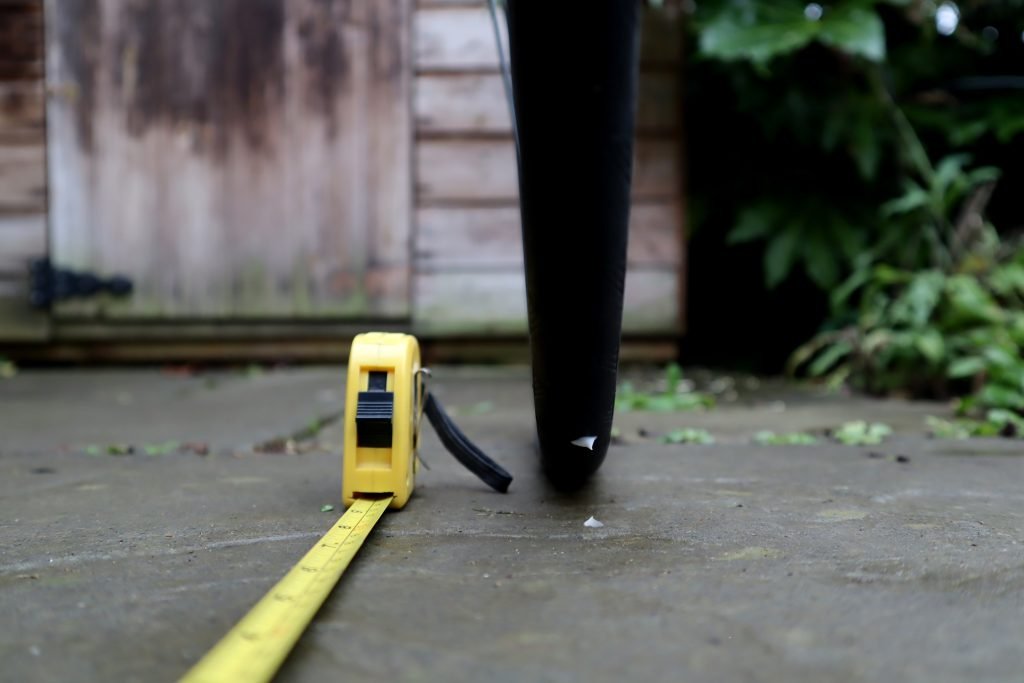
Most Common Bike Wheel Sizes
Each type of road bike and mountain bike comes with a different set of average wheel sizes. In general, each of these sizes offer a unique set of benefits and drawbacks.
What Is the Most Common Road Bike Wheel Size?
The most common size wheel for a road bike is 700c, and has been the standard size for a number of years.
The 700 refers to the wheel’s diameter of 700 mm, while the “c” is an old French width code for tires.
With “a” characterized as the most narrow width and “d” at the widest, “c” refers to a generally wider size.
Most Common Size of Mountain Bike Wheel
Mountain bike wheels come in three main sizes: 26 inches/559 wheels, 27.5 inches/650b wheels, and 29 inches/622 wheels.
The smaller, 26-inch mountain bike wheels were once considered standard size and are more lightweight and agile than larger sized wheels.
Despite their popularity in the past, 26-inch wheels are no longer the standard, as larger wheels have a better grip, traction, and durability and have therefore become more popular.
Both the 27.5-inch and 29-inch wheels offer a smoother and more controlled ride while sacrificing some of the acceleration capabilities of a 26-incher.
ISO Wheel Size Chart For Bike Tires and Rims
ISO otherwise known as the International Organization for Standardization developed the ISO wheel size system, which is universal and simplifies the once confusing task of finding the right size wheel for your bike.
The ISO standardization system uses two different numbers, that can often be found printed on the tire or rim walls.
The second number displayed in ISO tire size is the important one and represents the wheel’s bead seat diameter (as shown in the ISO size chart below).
If your wheel rim or tire has no size markings, you can use this ISO wheel size chart after measuring your wheels, to cross-reference and understand more about the size of your bike’s wheels.
| ISO Bead Seat Diameter | Traditional Sizings | Applications | |
|---|---|---|---|
| 137mm | 5.4" | 8 x 11/4 | Wheelchairs |
| 152mm | 6" | 10 x 2 | Wheelchairs |
| 203mm | 8" | 12 1/2 x various | Scooters (children's) |
| 254mm | 10" | 14 x 2.00 | Various (children's) |
| 305mm | 12" | 16 x 1.75 - 16 x 2.125 | Folding bikes, some recumbents |
| 317mm | 12.5" | 16 x 1 3/4 | Schwinn (children's) |
| 337mm | 13.25" | 16 x 1 3/8 | Very rare bike tire |
| 340mm | 13.4" | 400 A | Folding bikes, European bikes (children's) |
| 349mm | 13.75" | 16 x 1 3/8 | Folding bikes, recumbents, bikes (children's) |
| 355mm | 14" | 18 x 1.5 - x 2.125 | Folding bikes, bikes (childrens) |
| 369mm | 14.5" | 17 x 1 1/4 | Moulton bikes |
| 390mm | 15.35" | 450 A | European bikes ( children's) |
| 406mm | 16" | 20 x 1.5 - x 2.125 | BMX, bikes (children's), folding bikes, recumbents |
| 419mm | 16.5" | 20 x 1 3/4 | Schwinn (children's) |
| 440mm | 17.3" | 500A | European bikes (children's), folding bikes |
| 451mm | 17.75" | 20 x 1 1/8; x 1 1/4; x 1 3/8 | Bikes (children's), BMX, recumbents, folding bikes |
| 457mm | 18" | 22 x 1.75; x 2.125 | Bikes (children's) |
| 490mm | 19.3" | 550 A | European road bikes (children's) |
| 501mm | 19.75" | 22 x 1 3/8, 22 x 1.00 | British bikes (children's) |
| 507mm | 20" | 24 x 1.5- x 2.125 | Mountain bikes (children's), cruisers |
| 520mm | 20.5" | 24 x 1, 24 x 1 1/8, 24 x 1 3/4 | Schwinn bikes |
| 540mm | 21.25" | 24 x 1 1/8, 24 x 1 3/8 (E.5), | British bikes (children's), wheelchairs, Japanese women's bikes |
| 547mm | 21.5" | 24 x 1 1/4, 24 x 1 3/8 (S-5) | British bikes (children's), Schwinn bikes (children's) |
| 559mm | 22" | 26 x 1.00- x 2.125, fatbike tires up to 5 inches wide | Mountain bikes, cruisers, fatbikes, Schwinn bikes |
| 571mm | 22.5" | 26 x 1, 26 x 1 3/4, 650 C | Cannondale bikes, wheels for shorter cyclists, Schwinn bikes |
| 583mm | 22.95" | 700 D | GT bikes |
| 584mm | 23" | 650B, 26 x 1 1/2, 27.5 | French bikes, tandem and touring bikes, Raleigh & Schwinn mountain bikes |
| 590mm | 23.25" | 26 x 1 3/8 (E.A.3), 650 A | French & Italian bikes, English 3 speed bikes |
| 597mm | 23.5" | 26 x 1 1/4, 26 x 1 3/8 (S-6) | British bikes, Schwinn bikes |
| 599mm | 23.6" | 26 x 1.25, x 1.375 | Old US bikes |
| 622mm | 24.5" | 700 C, 28 x 1 5/8 x 1 1/2, 29 inch, 28 x 1 1/2 F.13 | All bike types, Canadian bikes (F.13), |
| 630mm | 24.8" | 27 x anything (not 27.5), 609mm | Rare Danish bikes, old road bikes |
| 635mm | 25" | 28 x 1 1/2, 700 B, 28 x 1 5/8 x 1 1/2 | European roadsters, old Swedish bikes |
| 686mm | 27" | 32 inch | Unicycles, Custom bikes |
| 787mm | 31" | 36 inch | Unicycles, Custom bikes |
Bike Wheel FAQs
The process of removing a bike wheel varies based on whether you wish to remove the front or back wheel.
Remove the front wheel by releasing the brake, flipping the bike over, opening its quick-release or unscrewing the wheel nuts, and pulling it off the fork.
Remove the back wheel by shifting the chain down onto the smallest cog, opening the break, loosening your quick release or wheel nuts, then pull the rear derailleur back and remove the wheel at the same time.
Bike wheels are not universal.
As bikes come in many different sizes, you’re limited with what size wheels you can use with a bike.
Usually, you’ll be able to make minor adjustments to the size of your wheels or tires, but wheels that are too big or small can easily damage your bicycle.
Putting road bike wheels on a mountain bike frame can be done and is a popular option for many commuters who cycle to work in the city but switch back to MTB wheels to hit the trails.
Just remember, as the designs of road and mountain bike wheels vary drastically, you’ll probably need to make adjustments elsewhere on your bike!
But yes, putting road bike wheels on a mountain bike is entirely possible!
For improved aerodynamics, the frame of a road bike is typically narrower and offers less wheel clearance than a mountain bike.
Due to the reduced wheel clearance road bikes typically offer, the wider tires and wheels that accompany a mountain bike are not usually compatible with road bike frames.
That being said, some slimmer 29-inch mountain bike wheels with narrow ties may fit on a road bike that takes 700c wheels.
However, cycling with wheels that are too big can end up causing damage to your bicycle.
If in doubt, don’t risk it.
Conclusion - How To Measure a Bike Wheel
I hope you found the content within this short article helpful. You should now understand exactly how to measure a bike wheel and how to measure a bike rim for a tire.
If I’ve left any of your questions unanswered, leave me a comment down below and I’ll get back to you straight away.
As always, make sure to use a good quality bike lock to secure your bike, when leaving it unattended.
If you’ve been wondering which size bike frame fits you best, have a read of this short guide, which will help you select the most suitable bike size in a few quick steps.
Lock it or lose it.
Ciao for now.


